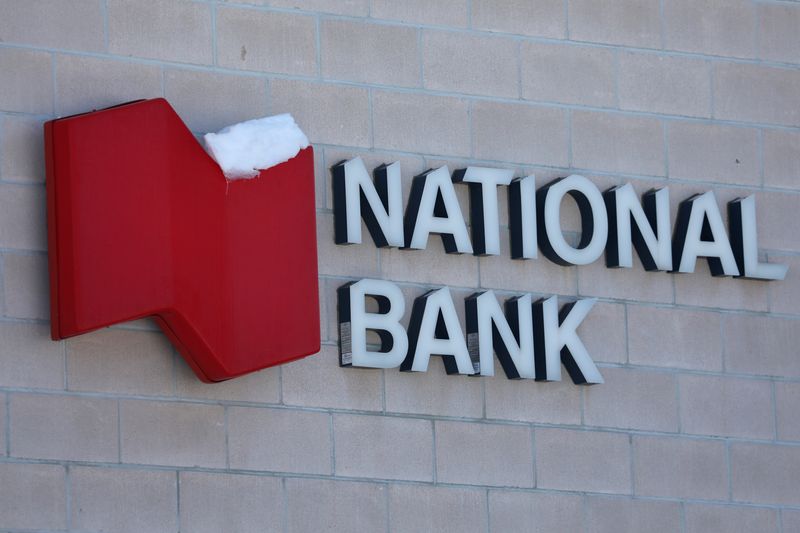By Nichola Saminather
TORONTO (Reuters) -Canadian banks wrapped up second-quarter earnings season last week, with most reporting better-than-expected profits, in large part by reducing the amounts of funds they set aside for future loan losses, raising questions among investors and analysts about whether they are too sanguine about looming risks.
Rising prices and the central bank's rapid interest rate hikes are squeezing Canadians, who are already among the most indebted in the developed world, and concerns are rising about the extent to which rates must further increase to skirt an inflationary spiral.
"Recessions start when the economy is at maximum awesome," said Brian Madden, chief investment officer at First Avenue Investment Counsel.
Canadian banks are likely "releasing provisions on performing loans on over-confidence in their (positive) base case economic scenario and underweighting the likelihood of adverse scenarios, which is, in my view, no longer a tail risk."
Total allowances for credit losses at Canada's Big Six banks fell 20% in the second quarter from a year ago to about C$23 billion ($18.1 billion), the lowest level of the past two years, according to the banks' financial statements.
Already, there is some evidence that consumers and companies are feeling the pinch, with insolvencies https://www.ic.gc.ca/eic/site/bsf-osb.nsf/eng/br04638.html#t1 up 24% in March from February.
Many of the banks also predict mortgage growth will slow from pandemic levels, although further business and credit card lending recovery are expected to help offset that.
Royal Bank of Canada reported the biggest drop in allowances, down 30% from a year ago. Chief Risk Officer Graeme Hepworth told analysts that the bank has adjusted provisions to reflect increased economic headwinds, but that was offset by pandemic-related reserve releases.
Canadian Imperial Bank of Commerce, which missed estimates partly on higher provisions, and Toronto-Dominion Bank had the smallest year-on-year declines in ACLs.
"We like the messaging we heard" from TD, which held back "a good amount" of allowances on macroeconomic risks, CIBC Capital Markets Analyst Paul Holden wrote in a note on Thursday. "Credit trends are benign but TD is still taking a conservative view to the future."
Despite the downward trend of recent quarters, ACLs remain about 21% above pre-pandemic levels.
"They are building provisions... it is maybe not being built up as fast as one would have expected," said Moody's (NYSE:MCO) Investors Service Senior Credit Officer Rob Colangelo.
The Canadian banks share index has gained 2.3% since the lenders began reporting results this week, compared with a 1.8% gain in the broader Toronto stocks benchmark, shrinking their underperformance since the March peak.
They remain below their historical average trading price relative to forward earnings, while offering higher dividend yields than U.S. peers.
While acknowledging that some conditions have worsened, many banks pointed to a firm economy and employment, and ongoing investment by businesses as drivers of earnings growth and high credit quality.

"It's a strange world, right?" Laurent Ferreira, chief executive at National Bank of Canada (OTC:NTIOF), said on its analyst call on Friday. "You have a strong economic backdrop... and tons of pessimism about a potential recession."
($1 = 1.2742 Canadian dollars)
